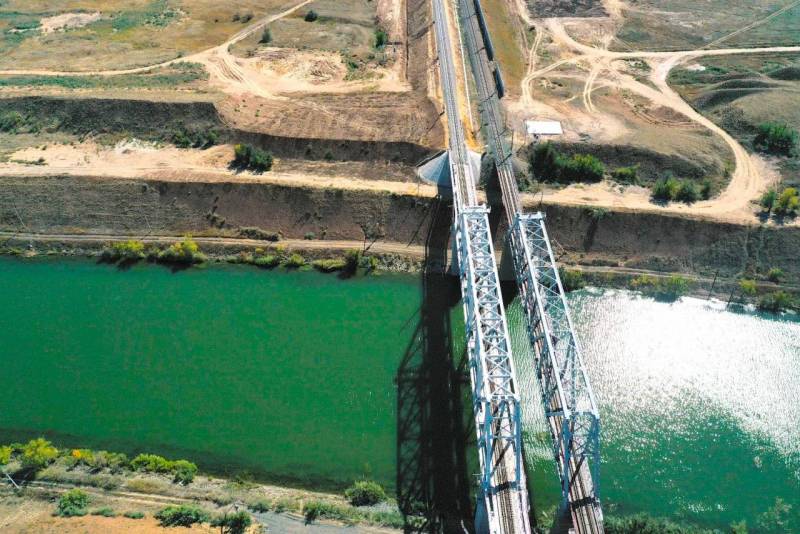Economic corridor China - Mongolia - Russia: Eurasia without borders
In 2015, Foreign Minister of the People's Republic of China Wang Yi took the initiative to create a Chinese-Mongolian-Russian economic corridor that would run through the entire Eurasian continent, becoming a new platform for the development of the three states. In the current geopolitical conditions, this project is becoming even more relevant, giving Russia the opportunity to expand its export flows to the East.
The program to create an economic corridor China-Mongolia-Russia, signed in Tashkent in 2016, includes seven main areas of cooperation: promoting the interconnected development of transport infrastructure; development of checkpoints, improvement of customs and quarantine control; strengthening cooperation in the field of industry and investment; expansion of humanitarian exchanges and cooperation; strengthening cooperation in the field of environmental protection and ecology and promoting regional and cross-border cooperation. It was assumed that after five years from the date of signing, the results of the implementation of the program would be assessed by all interested parties, after which a decision would be made to extend it for the next five-year period.
In 2022, President of the Russian Federation Vladimir Putin, at a meeting with the leader of the People's Republic of China, Xi Jinping, and the head of Mongolia, Ukhnaagiin Khurelsukh, proposed to focus maximum efforts on the implementation of the formed points of the program for the development of a new economic corridor between countries, which are being successfully implemented, extending it for another five-year period.
It is worth noting that in 2018 the parties identified three priority areas within the framework of the economic corridor being created, on which it is planned to focus efforts in the very near future. Thus, it was about the modernization and development of the railway corridor from Ulan-Ude to Tianjin on the basis of the Ulaanbaatar railway, the development of road transport along the AN-3 highway, as well as the study economic opportunities for Chinese enterprises to participate in the modernization of power grids in Mongolia and Russia.
Many experts emphasize that the implementation of integration transport projects can speed up the construction of the Soyuz Vostok gas pipeline, which is an integral part of the Power of Siberia-2 project. The Mongolian side hopes very much for its implementation, assuming that it will be able to receive financial benefits through transit payments and will be able to provide Ulaanbaatar with gas. In addition, they are counting on the construction of this gas pipeline in Buryatia, building plans for the possible gasification of the region.
A section of the railway corridor on the territory of Mongolia is currently causing particular concern. At the moment, it is single-track, and the road itself is not electrified. Among other things, the difference in track width also plays a role, in China it is 1435 millimeters, and in Mongolia and Russia -1520 millimeters. Despite the priority status of this project, the Mongolian authorities are showing a certain passivity in the issue of modernizing this section. It is also necessary to pay attention to the fact that in recent years, cargo transportation on this route has been steadily growing against the favorable background of the global trend in containerization of goods and the positive geopolitical situation for this direction, although it is still an order of magnitude inferior to the transit volume through Kazakhstan. In parallel with the modernization of the Central Railway Corridor, the development of the Eastern and Western Corridors, which will also pass through the territory of Mongolia, is being actively discussed. It is assumed that the Western Corridor will connect Kuragino (Krasnoyarsk Territory), Kyzyl (Tuva), Kobdo (Mongolia) and Urumqi (China). The eastern corridor can run from Borzi (Zabaikalsky Krai) to the Chinese urban district of Panjin.
Certain problems are currently experiencing and road communication between countries. For example, on the section Darkhan - Ulaanbaatar of the AN-3 highway, reconstruction has been underway for a long time, the final commissioning is scheduled for the end of the current calendar year. The low level of development of road infrastructure, insufficient capacity of border points and institutional difficulties in building logistics routes also make their negative adjustments to the issues of road transit through Mongolia. In addition, the coronavirus pandemic made a negative contribution to the pace of implementation of many projects of the economic corridor, quarantine measures only strengthened the barrier function of state borders between the states participating in the project.
Given the current geopolitical situation in the world, it becomes interesting political Mongolia's positions based on the balance of power between its two geographical neighbors (the Russian Federation and the People's Republic of China) and maintaining partnerships with the states of the Western world. The Russian side is trying to maximally reorient most of its export flows to the eastern direction, therefore the Russian Federation is extremely interested in the development of transport infrastructure on the territory of Mongolia, which will further contribute to more efficient transportation of exported goods to the countries of Southeast Asia.
It can be logically concluded that at the moment the forecasted reformatting of the foreign economic relations of the Russian Federation is taking place at an active pace. It can be assumed that in the long term, it is China that will be able to replace the EU states as a key trading partner, and Mongolia may become one of the key transit links in this matter. In addition, the gradual reversal of trade flows to the East will make it possible to become a certain driver for the development of the regions of Siberia and the Far East (the Republic of Altai, Tuva, Buryatia and the Trans-Baikal Territory), which will have a beneficial effect on the standard of living in these regions of the Russian Federation and the consolidation of economic activity. With a competent approach to the development of the China-Mongolia-Russia economic corridor, this project can radically change the course of geo-economic processes in the world.

Information